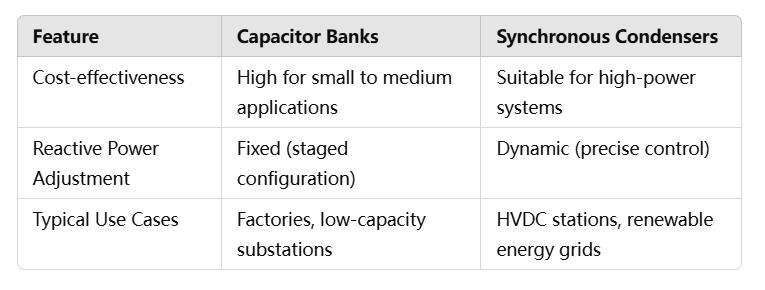
Efficient energy management has become a cornerstone of modern industries and commercial facilities. Among the various strategies to optimize energy usage, Power Factor Correction (PFC) stands out as a critical approach for reducing energy losses, improving power quality, and minimizing costs. Reactive power compensation methods play a vital role in achieving effective PFC. In this blog, we’ll explore the key aspects of PFC, discuss the importance of reactive power compensation, and highlight modern solutions offered by YT Electric.
Power factor (PF) is a measure of how effectively electrical power is converted into usable work output. It is expressed as a ratio:
Power Factor = Active Power (kW) / Apparent Power (kVA)
A power factor close to 1 indicates efficient energy usage, while a lower power factor implies inefficiencies due to reactive power.
Reactive power is the non-working power generated by把 inductive or capacitive loads such as motors, transformers, and lighting. While it does not perform any useful work, reactive power is necessary to maintain voltage levels and enable the functioning of electrical devices.
Poor power factor leads to increased energy consumption, higher utility bills, and excessive strain on electrical infrastructure. Benefits of improving power factor include:
Effective reactive power compensation is crucial for achieving power factor correction. Here are the primary methods:
1. Capacitor Banks
2. Capacitor banks are widely used to offset reactive power caused by inductive loads. By supplying leading reactive power, they improve the overall power factor of the system. Capacitor banks are cost-effective, easy to install, and suitable for static load conditions.
3. Example: For a 60 kW system running at 0.6 PF for 10 hours/day, installing a capacitor bank to achieve unity PF reduces the annual energy bill significantly, showcasing the economic benefits of PFC.
4. Synchronous Condensers
5. Synchronous condensers are over-excited synchronous motors operating at no load. They provide dynamic reactive power compensation, making them ideal for large-scale systems.
6. Advantages:
7. Emerging Trends: With increasing photovoltaic penetration, synchronous condensers are gaining attention as a modern solution to maintain grid stability.
Both methods serve to improve power factor but cater to different applications:
FeatureCapacitor BanksSynchronous CondensersCost-effectivenessHigh for small to medium applicationsSuitable for high-power systemsReactive Power AdjustmentFixed (staged configuration)Dynamic (precise control)Typical Use CasesFactories, low-capacity substationsHVDC stations, renewable energy grids.

At YT Electric, we specialize in cutting-edge power quality solutions, including Static Var Generators (SVGs) and Active Harmonic Filters (AHFs). Our products are designed to:
With a focus on innovation and customer-centric design, YT Electric’s solutions are trusted across industries, from manufacturing to renewable energy systems.
Reactive power compensation is essential in various sectors:
Power Factor Correction through reactive power compensation is a vital step toward energy efficiency and sustainability. Whether it’s reducing costs, improving power quality, or meeting regulatory standards, adopting advanced solutions like SVGs and AHFs ensures superior performance and reliability.
Interests or Questions, welcome to contact us: sales@yt-electric.com
Subscribe to us to enjoy event prices and get some of the best prices.
 IPv6 network supported
IPv6 network supported

